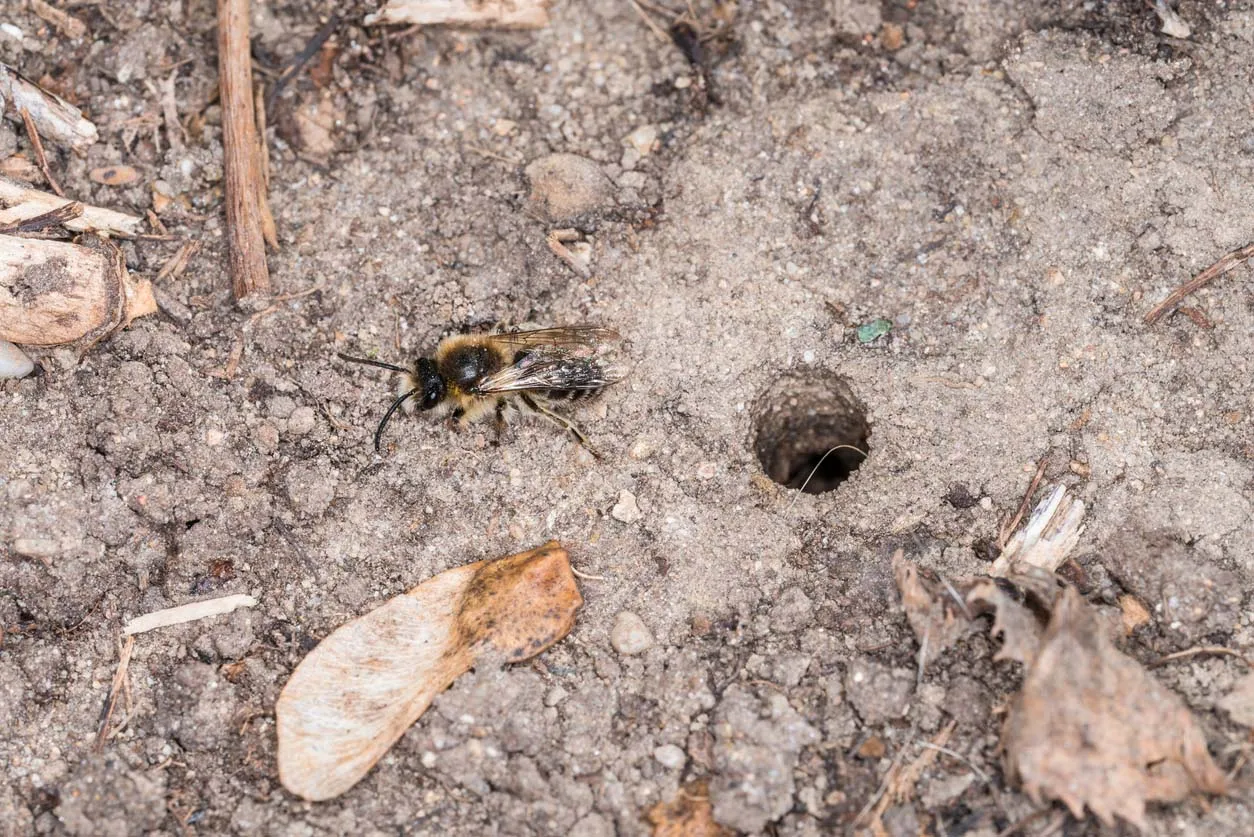How to Get Rid of Bees in the Ground: A Comprehensive Guide
Bees are vital pollinators that play a crucial role in our ecosystem. However, encountering a beehive in your yard can be a nuisance, especially if it’s located underground. While some bee species are solitary and pose minimal threat, others, like bumblebees and certain types of ground bees, can create a network of tunnels and pose a stinging hazard.
This guide provides comprehensive information on identifying bees in the ground, the potential dangers they pose, and various methods for safe and effective bee removal. Additionally, the FAQ section addresses frequently asked questions about ground bees and offers tips for preventing future infestations.
Identifying Bees in the Ground
The first step towards resolving a bee problem is accurately identifying the type of bee inhabiting your yard. Here are some common signs of ground bees:
- Small holes (around ½ inch in diameter) in the ground: These are the entrances to the bee’s nest.
- Bees flying in and out of the holes: This is a clear indication of an active nest.
- Patches of bare or damaged grass around the holes: Bee activity can disrupt the surrounding soil, affecting plant growth.
- Low buzzing sounds near the holes: This is a common sound associated with bee activity.
Potential Dangers of Ground Bees
While ground bees are generally less aggressive than other bee species, they can still sting if they feel threatened. Their stings, though painful, are rarely life-threatening unless a person has a severe allergy to bee venom. However, the presence of a beehive in your yard can pose the following risks:
- Stinging hazards: Children and pets playing in the yard are more likely to be stung if they come into contact with the bees or their nest.
- Allergic reactions: If someone in your household is allergic to bee stings, even a single sting can be dangerous.
- Property damage: In severe infestations, burrowing bees can damage lawns, gardens, and even swimming pool liners.
Safe and Effective Bee Removal Methods
Important Note: Always prioritize safety when dealing with bees. If you have any concerns about allergies or stings, it’s best to call a professional pest control service. Here are some methods for bee removal, ranging from natural approaches to professional intervention:
Natural Methods:
- Soap solution: Mix a tablespoon of dish soap with a gallon of water and spray it around the bee holes at dusk when the bees are less active. The soap disrupts their pheromone trails, making it difficult for them to locate their nest. Repeat this process for several days until bee activity ceases.
- Diatomaceous earth: Apply a thin layer of diatomaceous earth (DE) around the bee holes. DE is a powder made from fossilized algae that dehydrates insects with its abrasive properties. However, DE can irritate eyes and lungs, so wear a mask and gloves when handling it. Ensure you use food-grade DE to avoid harming plants or pets.
Caution: These natural methods may not be completely effective for all bee species and may require repeated application. They may also harm beneficial insects alongside the target bees.
Non-Chemical Methods:
- Exclusion techniques: These methods involve blocking the bees’ entry and exit points, forcing them to relocate. One approach is to cover the holes with wire mesh at dusk when the bees are inside the nest. Leave the mesh in place for a few days to ensure all the bees have left. Another technique involves placing one end of a shop vacuum cleaner hose over the hole and sucking out the bees. However, this method requires caution to avoid harming the bees.
Chemical Methods:
- Insecticide dusts: Insecticide dusts containing pyrethrum or boric acid can be puffed into the bee holes following the manufacturer’s instructions. These insecticides are typically less harmful to humans and pets compared to traditional liquid sprays. However, it’s crucial to choose an insecticide labeled for bee control and follow all safety precautions during application.
Professional Bee Removal:
If you’re uncomfortable handling bees yourself or the infestation seems extensive, consider hiring a professional pest control service. Professionals have the expertise and equipment to safely and effectively remove the bees and their nest. They can also identify the specific bee species and recommend the most appropriate removal method.
Table: Bee Removal Methods
| Method | Description | Advantages | Disadvantages |
|---|---|---|---|
| Soap solution | Disrupts pheromone trails, making it difficult for bees to locate their nest. | Natural, safe for humans and pets when used correctly. | May not be completely effective, requires repeated application. |
| Diatomaceous earth | Dehydrates insects with its abrasive properties. | Natural, readily available. | Can irritate eyes and lungs, may harm beneficial insects. |
| Exclusion techniques | Blocks bees’ entry and exit points, |






More Stories
Where to Watch USMNT vs Jamaica National Football Team
How I Met My Monster
How Should a Ring Fit